SOUTH CAROLINA QUEENS AND KINGS
Special by THE NEW TIMES HOLLER!
From the Harmonious Grits Desk by
© Amir Bey, 2011
March 14
Updated August 18, 2014
|
I've been thinking about my mother's side of the family, starting with my great-great grandmother, Sukie or Sooky Bookhart Green from Blythewood, Fairfield County, South Carolina. (This article only goes as far as the generation of my mother).
There is a lot of testimony to her character in the tintype at right. For a studio shot from this period, clothes and accessories could be rented, and a background selected. Is it possible that since, as my grandmother told me, Sukie was a "House Slave," she was able to have this rather formal photo taken?
On the original, her earrings, scarf broach and the rings on the fingers of her right hand were painted gold. However, not all was sweet for this house slave: her husband John Green was given away from her during slavery, but apparently not too far, to a relative of the plantation owner, and they reunited after the Civil War.
She was West African and and said to be South Carolinian Native American, but of what nations are not known if that is true. Her name, Sukie or Sookie, could be related to the West African name Soukina, and might be a clue to what part of Africa her forbears came from.
|
SUKIE BOOKHART GREEN
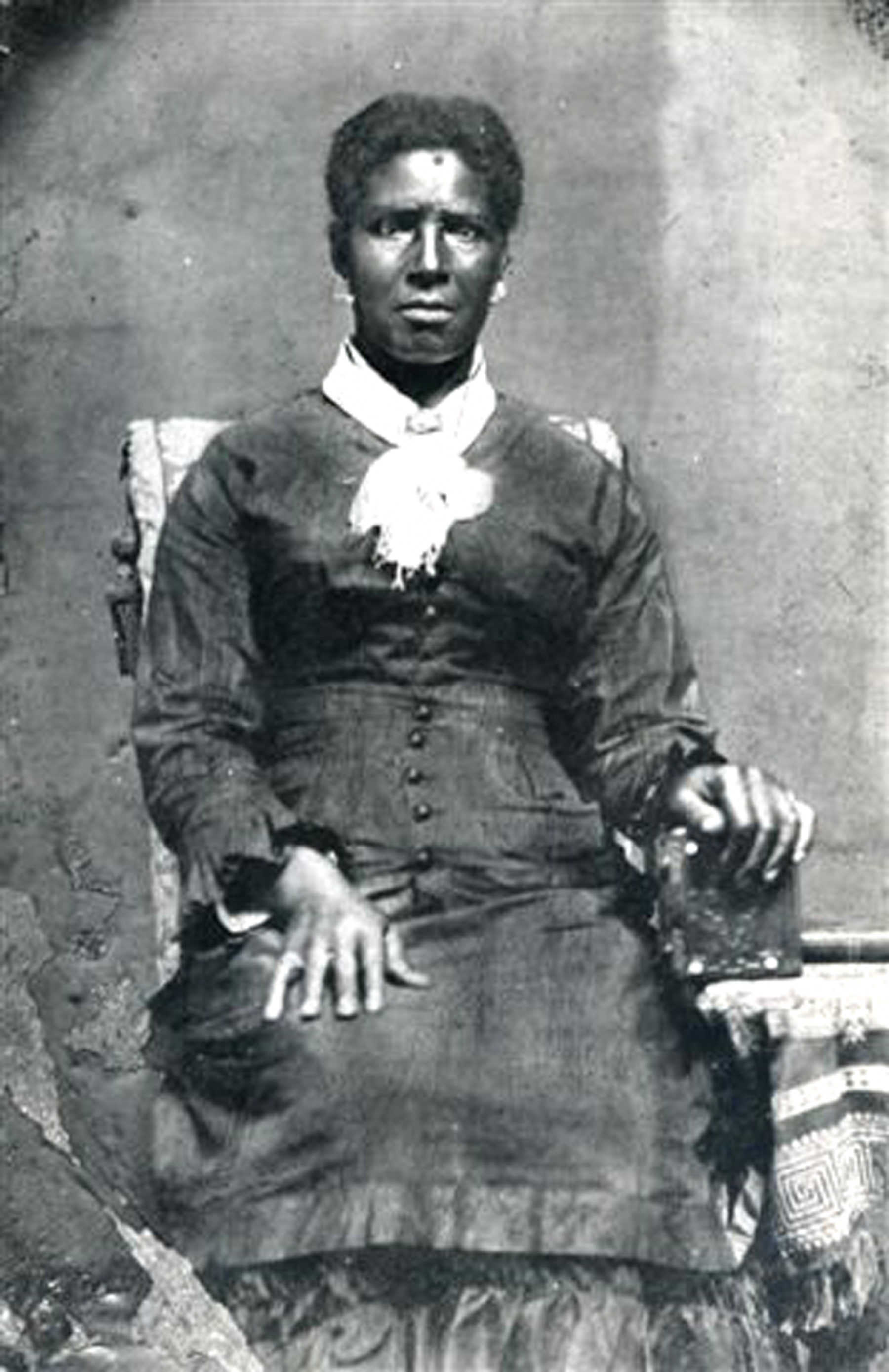
From a tintype, circa 1850s
|
Wendy Washington, whose great-grandfather, Robert Bookert, was a slave on the same plantation as Sukie, contacted me in 2013 after reading this article. She provided me with valuable information about the plantation where Sukie lived. The plantation was owned by Dr. Samuel Wingard Bookhart (1829-1913), who was a respected doctor, and had the largest plantation in the area. Ms. Washington led me to new information on Suckey - Sooky – Sukie Bookhart Green.
Searching online, I came across the Blythewood Historical Society and talked with the society’s president Frankie McLean. She was enthusiastic about my call, and the historical society has been most helpful in providing me with information and new images. There was also some information in their detailed timeline concerning the former slaves of Blythewood. There is no photography of former slaves, and of whites of that era on it, and Sukie's tintype is a remarkable image by any standard.
Robert P. Wood, a board member of the Historical Society told me in an email:
“We had a train that took passengers to Columbia before the war, so the photo was far more likely taken there than in Bluthwood [sic]. But I don’t know. Just haven’t heard of a photography studio here (ever). It could have been a traveling photographer, but I think they were rare in those days.”
That train was destroyed by Union forces during the war. Could the tintype have been taken after the war? One possibility is that Sukie may have been a maid at the Blythewood boarding school that Dr. Bookhart founded and ran before and after the war. Could the tintype have been taken during that period? Or, was it taken after the war at a time that Sukie went to Columbia? More needs to be known about that school and if a former house slave like Sukie may have been working there.
There can be difficult reckonings when researching the lives of anyone’s ancestors. The challenge for African Americans seeking to have an understanding of our ancestry is digesting the reality that our ancestors, of whom we would like to have exalted views, were slaves and that we must personally come to terms with being “owned,” “bought,” and worse as we seek to gather a full historical perspective.
I received an email from Mr. Wade Dorsey, the society official historian, board member, and great-great grandnephew of Dr. Samuel Bookhart who gave me this information:
“In 1854, Christian Entzminger made a division of most of his property. He also set up several benevolent trusts for Baptist Churches and causes. He divided up more than sixty slaves, giving some to several Entzminger nephews and nieces, and the bulk to his nephew Samuel W. Bookhart. He also gave S. W. Bookhart more than 2000 acres of land. These transactions are found in the Miscellaneous Records of the Secretary of State, Book X (Columbia Series) at the S.C. Archives. The slaves are all listed by name (first names only). Dr. Bookhart appears with about sixty slaves in the 1860 Slave Census (no names of slaves listed). Some of his slaves are listed by name in the Minutes of Sandy Level Baptist Church which are at the South Caroliniana Library at the University of S.C. Since Dr. Bookhart died in 1913, his estate does not list any slave property. When his wife died in 1914, however, she leaves to Harry & Lucy Green “my faithful servants” twenty acres of land adjacent to the school for black children in Blythewood. This land was adjacent to Boney & Wooten.”
Thus far the earliest mention I have seen of Sukie, spelled Suckey here, is in the Sandy Level Baptist Church record’s June 1861 minutes. The white church attendees are listed first followed by the "colored," who are grouped according to their owners. Dr. Bookhart had the largest share of colored members. That is a result of the bequest of his uncle, Christian Entzminger. This made Dr. Bookhart the biggest cotton producer in the area. Please examine the church’s minutes for May 1861 below. They were amended in 1864 and later.
|
SANDY LEVEL CHURCH ATTENDANCE MAY, 1861
| |
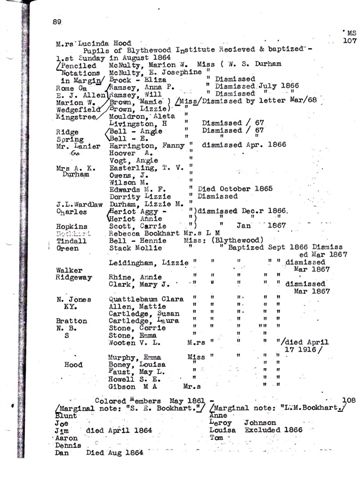
A list (pg 1)of attendees to the church with the "property" listed under the names of "owners"
|
|
|
|
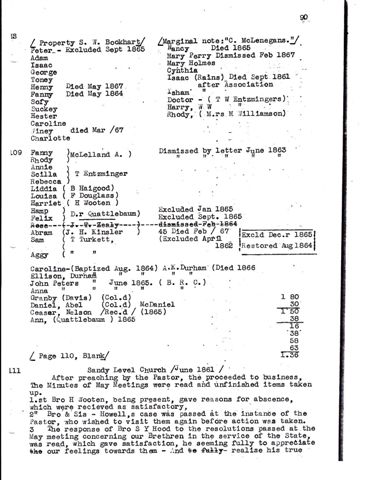
The second page of attendees; Sukie is listed here as "Sukey."
|
On the right page where Sukie’s name is, the “Colored Members,” are listed as “Property of S. W. Bookhart” etc. Sukie’s name is written as Sukey, and is the 9th from the top on the left side. The spellings are all phonetic renderings. I prefer Sukie because it reads more accurately. The timeline provided by the Blythewood Society states that in 1861 there were 55 blacks and 151 whites, of which the blacks were owned by 14 members of the church.
|
SUKIE'S PLACES OF WORSHIP
| |
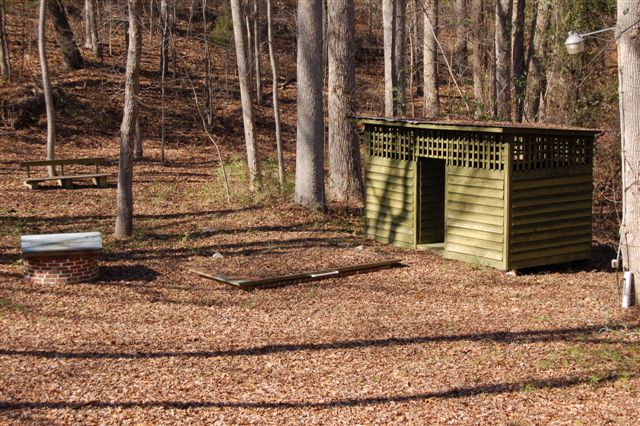
This structure, dating from the 1850s, was where Sukie was baptised.
|
|
|
|
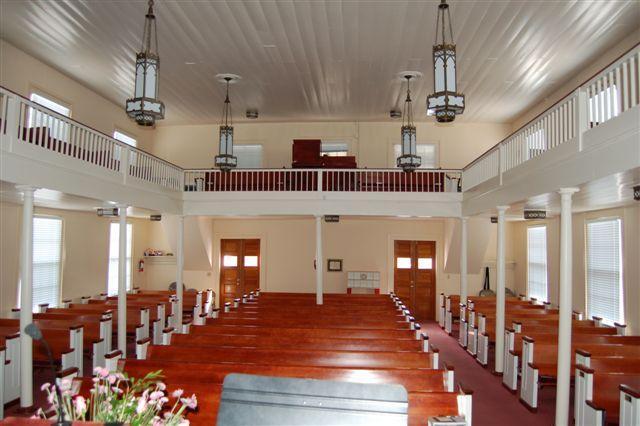
The inside of the Sandy Level Baptist Church. Sukie and other slaves allowed to attend services were seated in the balcony.
|
|
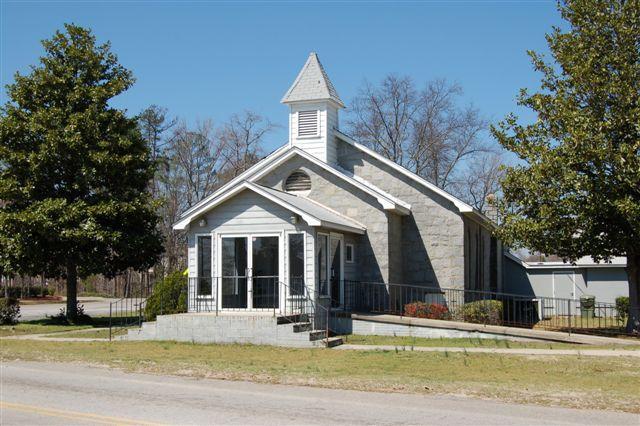
Blythewood Bethel Baptist Church, where the freed slaves worshipped after the Civil War. The last date for Sukie's attendance at the Sandy Level Church was 1868. Afterwards, she attended this church.
|
ADDITIONAL MUSINGS AND QUESTIONS ON SUKIE AND BLYTHEWOOD, SC
Doko was the original name of Blythewood. In 1877 it was officially changed to its present name. There are a few theories as to the source of that name. Here is one account from the
Doko Farm Site
“This unusual name, Doko, is believed to be an Indian name meaning "watering place." Another source states that Doko was an African name meaning, "Where the iron horse drinks." Both were appropriate because, at that time, the steam engines stopped here to take on water and fuel." (Blythewood Scrapbook, 2004 Blythewood Garden Club)”
Doko is also an arrondissement (borough) of Kouffo, a department (state, province) located in the southwest area of the country Benin. If Benin proves to be the source for Doko, it may be that the languages of that region are related to the Africans who were brought there.
If the racial and economic climate of the time is considered, was the name Doko too “African” for an area that had the “State of rebellion” mentioned in the Historical Society’s timeline because of Klan activity that President Grant needed to suppress? From one online source I read that the name was changed because the sound was too “awkward." Is it more awkward than saying Blythewood?
Bookhart was originally spelled Bookhardt until the 19th Century, when most of the Bookharts changed it. The Bookharts and the Entzmingers were from Germany, and Dr. Bookhart was a second-generation American. Some former slaves created variations such as Wendy Washington’s ancestor Robert Bookert. Because the Bookhart's were relatively recent planters, it's possible that many of their slaves were not on their plantations for more than 2 generations, unlike some of the older South Carolina plantations, whose workers were enslaved for 3-4 or more generations.
Questions:
• Who were Sukie’s parents?
• When was she born?
• When did she pass away?
For the latter questions there were two Sukie Greens who lived to be nearly 100. However, there are no relatives for either of them that seem to be relatives that I've heard of, although that doesn't disqualify either Sukie from being this Sukie.
|
NANCY AND DRAYTON NANCE SUBER
| |
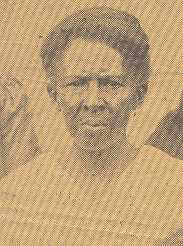
NANCY GREEN SUBER
1864-1934
|
|
|
|
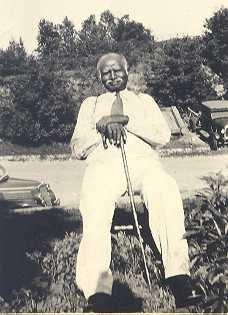
Drayton Nance Suber
1861-1943
|
Sukie and John had maybe three children, of which Nancy, my great-grandmother was one of them. She was born around 1864 in Fairfield County, SC before slavery ended. Nancy was educated by former abolitionists
who came to South Carolina from Massachusetts to teach during reconstruction. I have seen a letter and photograph, now lost, from a woman who wrote her sometime after that. Nancy married Drayton Nance Suber on October 30, 1884.
They both had healing skills. Drayton was said to know "Indian" medicine, meaning he knew about curing human and animal ailments through herbs and other natural cures; for example if a cow lost its cud, he would take an oily rag (mixed with
I don't know what) and jam it down the cow's throat, and its cud would return. His granddaughter, my mother Flora Cherot, remembers being given the root from Queen's Delight for an upset stomach, Sarsaparilla, and other combinations. People would buy different bottles of his cures, and some of them were frequent customers.
Drayton's ability to recognize an ailment and know the cure was not only an innate talent, but also implies some kind of training or teaching.
The secrets he must have known! Nancy's skills were noticed by a doctor, who wanted her to work for him, but she refused.
Drayton, the son of Uriah and Emalyne Suber, was from Newberry, South Carolina; his parents had seven children. Mainly of West African descent, he also had Cherokee and European - he was somehow related to whites who were prominent.
On his mother's side there were said to be 6 or seven sisters who were European and Native American, with all but one marrying white men; one of them married a black man, but it is not known whether this was Emyline or her mother. When he was in his teens, some rednecks took him in the woods and cut most of his ear off
because he could read and was "uppity". Later, the couple were ran out of Newberry because he was organizing to vote. They told him to "...take his mistress with him" - as school teachers were called then - and Nancy and Drayton moved to Columbia, SC. At some point in adulthood, he lost his leg while working with dynamite,
not running far enough before it went off.
Columbia, the state capital and major city of South Carolina, was less dangerous than the more rural Newberry County. Lynching was at one of its high points in the 1880s, and many African Americans lost their lives for voting,
and sharecropping became the new slavery. However, all life wasn't about living in fear and disrespect.
They in turn had seven children: Clara (1886-1946), Willy, Isaiah, Andrew, Clarence, Mary, and in 1900, my grandmother, Theodosia Emalyne Suber -"Grammy".
When whites would call Nancy "Aunty", she would respond with "Who's sister am I, your Mammy's or your Pappy's?" Drayton had three guns by his bed and some pistols; like many people in the south, they were for hunting and protection. He was known for his fiery temper, once punching a dentist during a painful tooth extraction. - No anesthesia in those days!
They made sure their children took advantage of the limited educational opportunities allowed blacks. Nancy attended a Booker T. Washington speech. Inspired, she sent her sons Andrew and Clarence to Tuskegee Institute, where Andrew learned how to lay tile and Clarence studied to be a carpenter; he also studied music there. The oldest child, Clara, attended school at Benedict College in Columbia.
Nowadays Nancy and Drayton might be called "activists", or "progressives;" but they did what had to be done: they were the first generation to be born in slavery with not much of a memory of it, if at all. Drayton remembered people jumping up and down saying, "We's Free! We's Free!"
Folks of their generation became teachers and the first voting rights organizers. They taught for far less than what white teachers were paid, to segregated classrooms that were inadequately equipped.
|
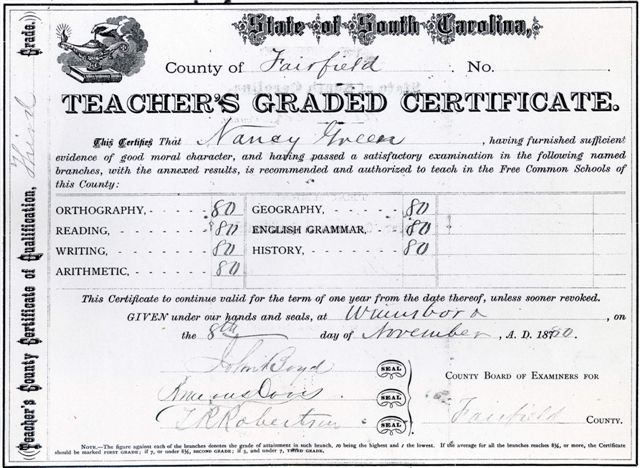
Nancy Suber's (nee Green) Teacher's Certificate permitting her to teach the third grade; dated November 8th, 1880, she was around 16 then. By the time Nancy received this certificate to teach third grade, the new rights supported by Reconstruction were being eroded by armed white militias,
and the resurgent Democratic party that succeeded in removing Federal troops from former Confederate states (the "redeemed south"), hounded Republicans out of office, and intimidated blacks from voting. Her next teaching certificate was given on July 6, 1883, for Newberry County, where Drayton was born. It is not known when they met, but according to their marriage certificate, they were married on Oct 30, 1884.
|
|
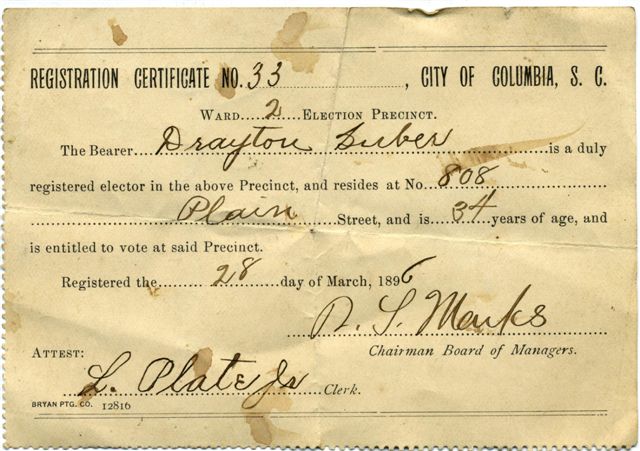
Drayton Suber's voting registration. His birthday was July, 1861, and the age given here, 34, for March 28, 1896, is consistent with his birthdate given in other documents.
|
It was illegal for slaves to read and write. Not many ancestors on either side of my family were literate until the generation of my greatgrandparents.
It's interesting that none of the adults (of the Great-Great Grands) who were illiterate became literate after the Civil War. Drayton (1861) and Nancy (1864) were educated during their childhoods. All of their children graduated from high school, and most attended segregated colleges.
"Uncle Clarence" (1892-1925), became a bugler when he was drafted in the Army during World War I. Clarence saw that the Red Cross only gave
wounded white soldiers coffee and donuts, ignoring wounded black soldiers as they lay in the field. His letters to his mother described how he had to spend days in the cold, wet, rat-infested trenches, where he most likely contracted TB.
His health was never the same, and he passed away at 33. Nancy never forgave the Red Cross for this ill-treatment of her favorite son.
When the Army gave the family money upon his passing, they were able to install electricity and pay off the mortgage. Because of this, Nancy vowed to stop "asking the lord to remove all obstacles". For a more complete study of Clarence Suber, visit Clarence Suber the Bugler
"Chick", or Aunt Mary (1898-1999) as she was formally called, was a beauty, and a talented seamstress, with many clients, some of them wealthy.
During the 40s through the 70s, when she lived in Ann Arbor, Michigan, she sometimes had cars lining outside the house to pick orders up.
Pins pressed in her lips while she sewed was a familiar sight. Along with her attractiveness, she had sour moods that were offset by her generosity. I sometimes worked in
our large garden with her, my earliest experience working with-in the Earth.
|
SUBER SIBLINGS
| |
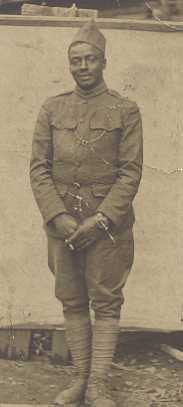
Clarence Holmes Suber. A bugler in the Army, France, circa 1918. He saw a lot of action in the trenches, and his Company B 371st Infantry Regiment, 93rd Division, fought some of the fiercest battles of the war.
|
|
|
|
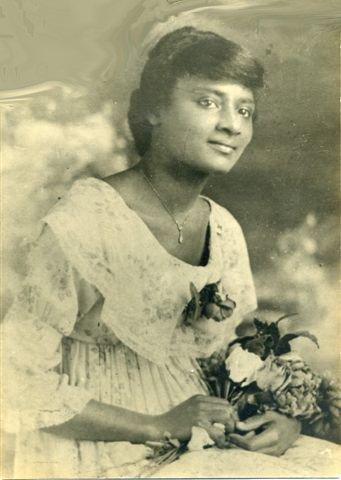
"Chick", or Mary Suber, 1916, at 18 years of age. Said to be one of the most attractive women in the family, was called "Chick", because she ate like a chick as a child. Chick also had a Teacher's
Certificate, dated for this year, 1916, to teach the 1st Grade.
|
|
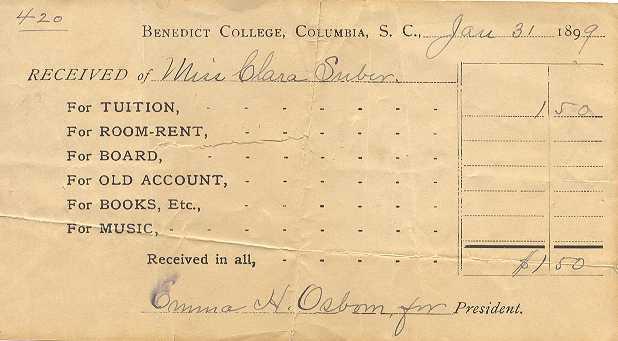
A receipt for Clara Suber's tuition to Benedict College in Columbia, SC, for $1.50, dated January 31, 1899.
|
|
|
GRAMMY
1900-1991
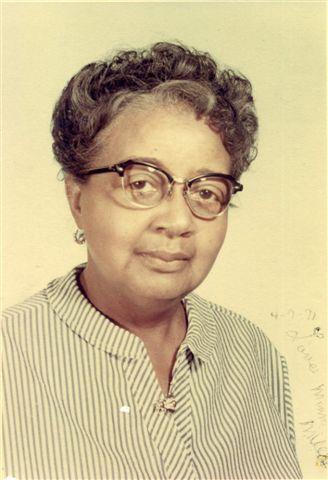
Theodosia Emalyne Suber, 1971
Sometime after World War I, Theodosia Emalyne Suber met and married Joseph Wardlaw Lee, Jr., from Abbeville, SC - "I met her at a party...she had those big eyes..."
They moved to Detroit, Michigan, in 1920, the same year that my father's parents left Florida and moved to New York City. Both couples, part of the post war migration to the north, had their first borns that year.
Theodosia and Joseph's children were my mother, Flora Alberta Lee, Joseph Wardlaw Lee, Jr., and Theodosia Mary Lee, who was born on Grammy's birthday, July 17, 1924; my aunt's nicknames were "Tisey",
and "Glamour Girl."
After Grammy and Joseph divorced, she moved to nearby Ann Arbor, Michigan with the children. Flora lived for a while with the family in
Columbia, and in Richmond with Chick, but didn't like Richmond, so moved back with her mother. She remembers planting pecan trees with her grandfather Drayton, and him taking her by the state house in Columbia,
showing her the bullets and cannon marks from Sherman's attack on Columbia that can be seen to this day. "They went through here and in Georgia and shot 'em up!" Not every Southerner thought Sherman's March was a bad thing.
|
|
GRAMMY AND CHICK
| |
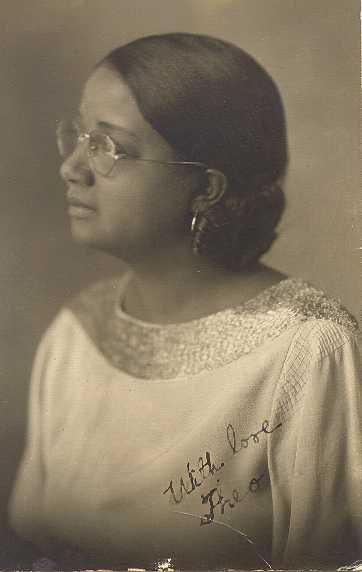
Grammy in 1937
|
|
|
|

Chick, 1946-47
|
Grammy and Chick. For this grandchild, that is a phrase that I can't say enough about, so I'll leave it alone...for the most part, except to say:
Grits and eggs,
Grits, eggs and brains
Coal coming down the shute
"Put yo' feet in the path and come on over,"
Brown hands in the brown earth
"Grammy likes it when you say 'Yes Mam',"
Hot comb on the stove
"Gramstuds" (from "I ain't studin' you!")
Saturday Snacks after cleanin' house
"I'm a beat the tar out of you!"
Home made ice cream
"60 cents? What do you want with all that money?"
Grape jam and preserves in the Fall (Too young to taste the wine) from the grape vine.
"Turn out the electwicity!"
The sound of train in the evening
|
THE SUBER-LEE CHILDREN
FLORA ALBERTA LEE
1920-2015
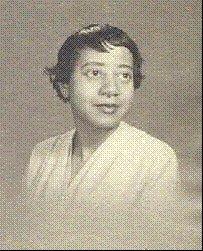
Moms in 1957, Ann Arbor, Michigan
|
Ann Arbor's University of Michigan environment offered many options to the Suber-Lee children. The public schools system was one of the best in the
country. Flora first went to Wilberforce University, where she met my father, Romeo Augustus Cherot of New York City. Flora later obtained masters in Sociology and in Social Work at the U of M. She worked for social services in New York City, and in Michigan
at Ypsilanti State Hospital, and as a high school counselor. To hear a recorded message from Romeo Cherot to Flora Lee while he was stationed at Fort Bennings, GA, circa 1942-43,
click here then scroll down and click on the play arrow on the audio bar.
Joseph W. Lee, Jr. obtained a masters in Social Work at the U of M; he married Elene Mason, a school teacher, and later moved to Grand Rapids,
where he headed many social programs, and was a supervisor for the Department of Social Services. He raised a huge storm when he and three other black professionals secretly bought large tracts of land in a white area of Grand Rapids
to be developed called Auburn Hills. There were drawn-out court battles, but Joseph and his associates prevailed, and homes were built by 1965 with African Americans the main occupants.
Theo (Tisey) was a special education teacher, and along with her husband,
Walter G. Sellers II, a mover and shaker in Wilberforce, Ohio, at Central State College there, and was involved in numerous activities in the surrounding community.
There's a story about how Tisey handled discrimination in late 1930s Ann Arbor. She went to a diner with friends and ordered sundaes and sodas. They noticed that the white patrons were getting glasses, but they,
all African American females were being served paper cups. They waited patiently until the waitress was finished serving, and then walked out.
|
THEODOSIA MARY LEE AND JOSEPH WARDLAW LEE III.
| |
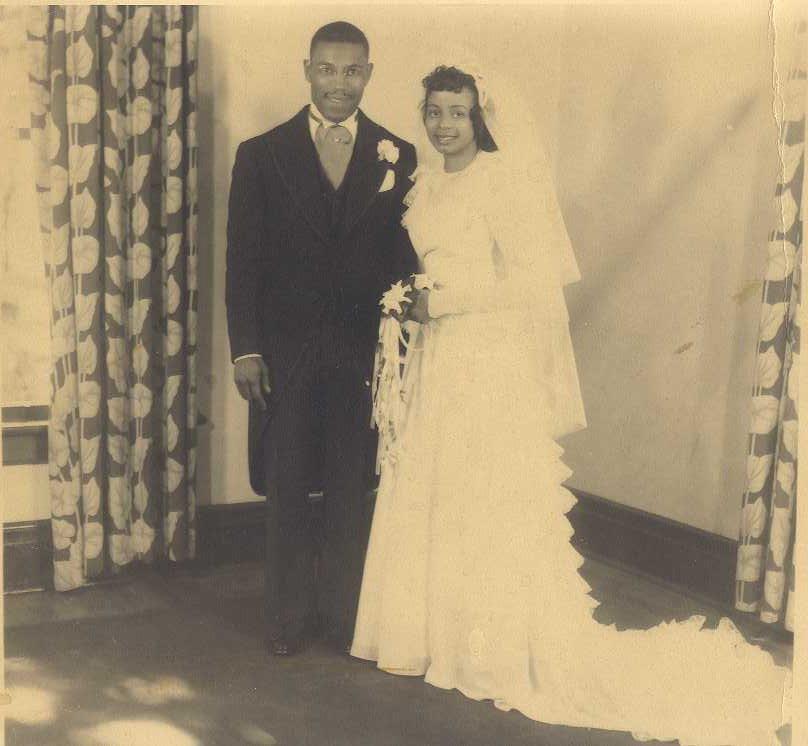
Theodosia "Tisey" Lee 1924-1986 on her wedding day to Walter Garret Sellers II, 1948. Chick created her bridal gown.
|
|
|
|
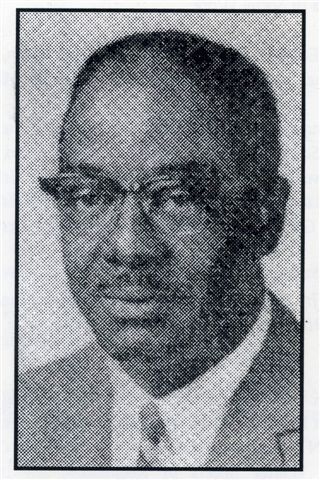
Joseph Wardlaw Lee, Jr. (3rd) 1922-1998
|
Joseph Wardlaw Lee and his father, "Professor" Joseph Wardlaw Lee, Sr.
|
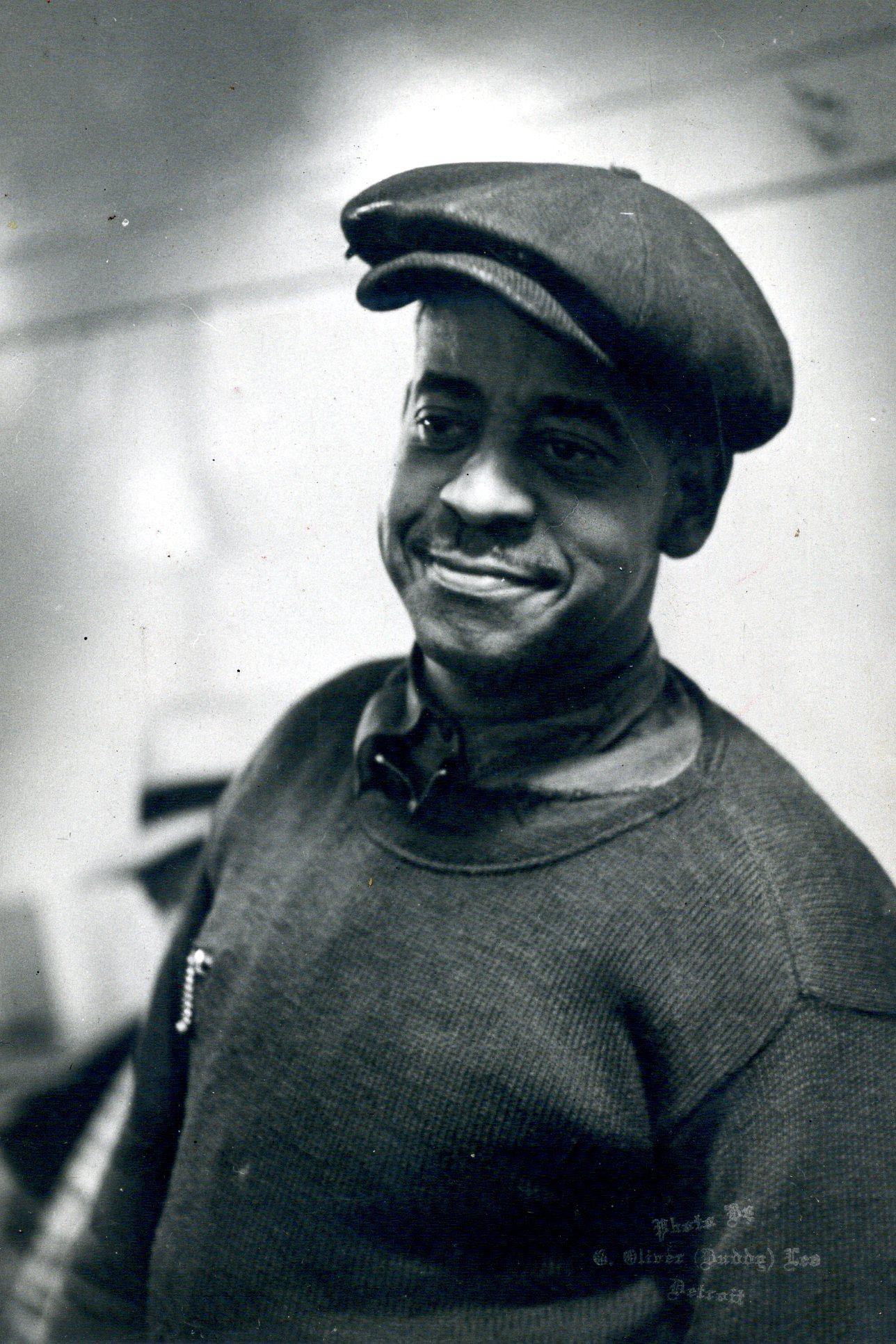
Joseph Wardlaw Lee, II 1894- 1984
|
|
|
|
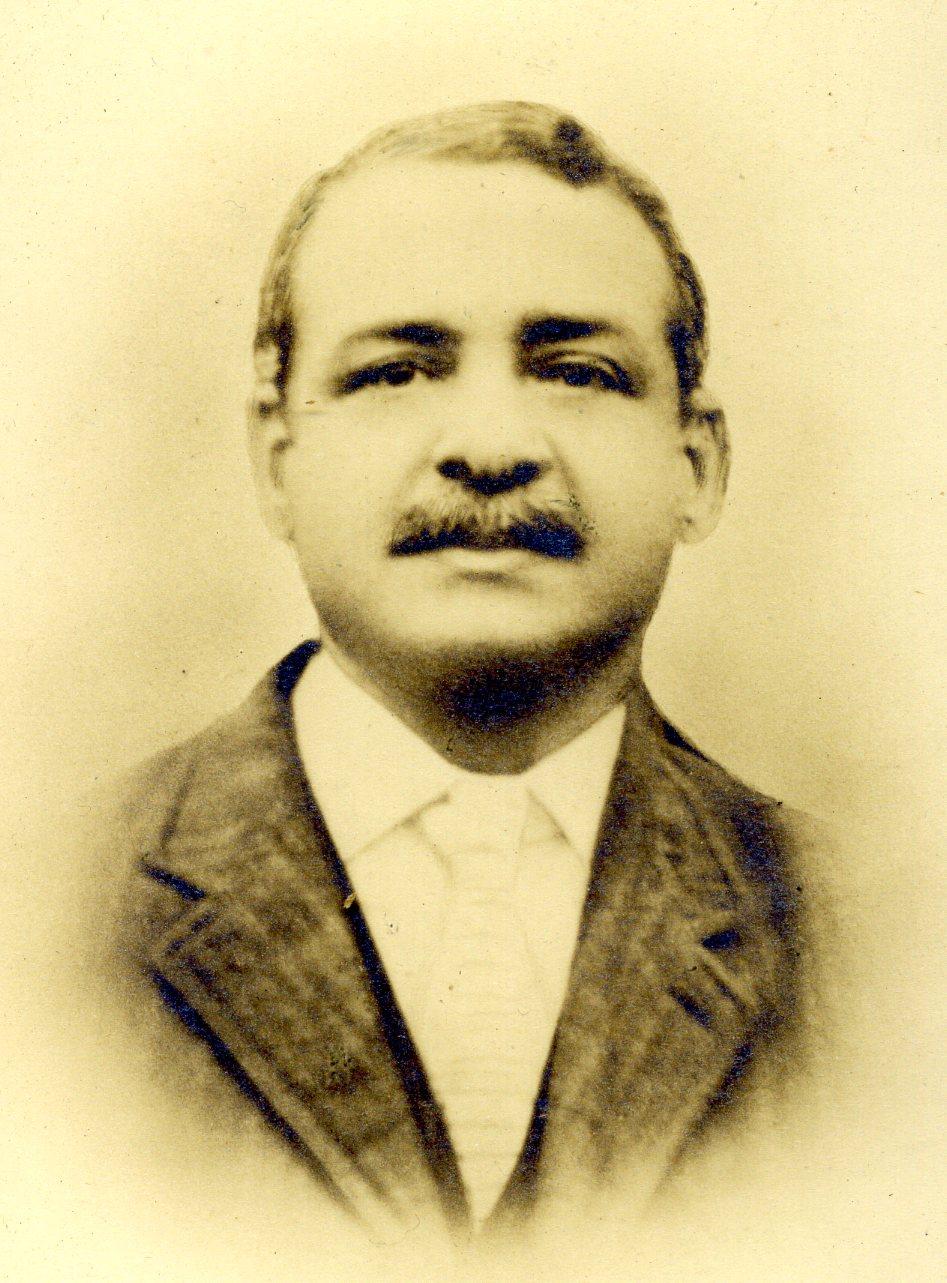
Joseph Wardlaw Lee I. 1865-1935
|
My grandfather Joseph W. Lee Jr. was the son of Joseph Wardlaw Lee, a high school principal in Abbeville, SC, and a respected member of his community and his mother, Margaret Fair, from South Carolina. Joseph Sr. was a graduate of Allen Univeristy, located in Columbia, SC. Founded in 1870 by the African Methodist Episcopal Church, its purpose was to educate the newly freed slaves.
African American educators faced many challenges: inadequate funding, intimidation, and yet they persevered. Joseph Lee Sr. lost his arm as a youth, hopping trains for fun. When he was five, his father, Allen Lee, a barber, would show him off because he could
recite the capitals for each state. The only mention of Joseph Lee Sr.'s mother is that she was Anne Henderson from Virginia. Both parents are listed as "Mulatto".
Allen Lee was born in Columbia, SC in 1837 into a large family of children, many boys and girls. The early
censuses only listed the names of the head of the household, and never the children, until 1860. Sometime before 1860, Allen moved to Abbeville, one of the most fervent hotbeds for succession; South Carolina became the first state to succeed from the Union. He is listed in the 1860 census as 23 years old, profession: barber, Mulatto. It's
interesting that he is a boarder in a house with 6 other men, all single white males, with one an immigrant from Ireland. This shows that although "black", or mulatto, as a free man he lived where free white men lived. His access to housing during slavery differed from the segregation during post-Reconstruction and the 20th Century south.
Could his categorization as a "Mulatto" have anything to do with that? South Carolina was in the forefront of the Secession movement in the south. As a barber who cut white men's hair at that time and place, I wonder what conversations he might have heard!
To what degree was his status as a Free Man and that of his free family members compromised? There were blacks in that area who went to war on the side of the Confederacy with their masters. Freedom for African Americans was limited and uncertain at best. In South Carolina, free blacks between 16 and 60 years of age had to pay a "capitation" tax of $2.00 ($36.00 in today's money) annually to a local court. Often owners would deed their slaves
out to other whites, to more or less "manage" them. This happened quite frequently and resulted in many court challenges, so that after 1841 manumission of slaves was ended and such deeding of "property" was no longer legal. No one was completely free, and
and anyone's freedom could be revoked. It was also illegal for blacks to leave South Carolina unless permanently. However, some free blacks were wealthy slave owners themselves, and when the Civil War broke out, pledged their loyalty to the Confederacy.
Compared to the Lee side, the Suber-Green side has more photos, and more contacts within the family, yielding more anecdotes and reliable information. From the Lee side, the history is, like all family histories, intriguing and in some areas, murky.
Let's start with the intriguing part. Beginning with Professor Joseph W. Lee, none of the males going back to the 1840 census were slaves. That includes his father, Allen Lee, and his father, Henry Lee, who was born in 1800, (another source says 1805). And it appears that Henry and his wife Eliza Lee had been free and a family for some time. It is
not known how Henry Lee, a cabinet maker, who was listed in the 1850 census as having $200 dollars, and later $1,200, and having his own house, and his wife Eliza, who was born in 1798 (another source lists 1807), were born free or became free.
In those days the census listed three "ethnic" categories: B - Free Black; W - White; and M - Mulatto. The Lees were often listed as M, which didn't mean "bi-racial", but "mixed".
The Lees were mixed with West African, and Scottish-Irish, with more European than the Green-Subers. Drayton certainly had European ancestry, and his last name is German. The Subers probably had more African and Native American than the Lees. When Nancy Suber passed away, there were
relatives of many shades, some very "European-looking." It was, to Nancy's granddaughter Flora, remarkable how people from the distant backwoods places heard about the funeral and got to Columbia in such a short time.
One can only speculate, since there is not much documentation. There are many white Lees, and Henry "Light Horse" Lee, a signer of the Declaration of Independence, and
father of Robert E. Lee, was very popular in South Carolina because of his fighting there during the Revolutionary War. Could he have been named after the war hero? After all, the war hadn't been
over for twenty years, and it's possible that his father - or owner - named him after this historical figure. Or, it may only be because Henry Lee is a common name.
And now for the Murky part: Joseph Lee, Jr. (II), said that his mother, Margaret, was the daughter of an Alec Bowie, who was an "Indian from Cairo." I asked him, "Indian from Cairo?" "Yes, Indians, the smartest people in the world!"
He claimed that his mother had long black hair, as testimony to that heritage. I looked up an Alec Bowie, and I saw no listing for his mother Margaret in that household. However, I did find the father of his mother that folks in the family recognize,
Naman Fair, who married Flora Owens. Flora Owens was the namesake of Flora Lee, whose full name was Flora Owens Fair. It's logical to assume that Joseph Lee named his daughter Flora after her. Flora Owens Fair, who was the daughter of Ben Owens of Abbeville, and Maria Smith of Newberry, was 13, and Naman was 16-17 when their daughter Margaret was born in 1871. That is not
unusual for the time, but it makes them the youngest couple on either side of my family to be married and have children. Nowadays if a girl is pregnant at that age, it's rare that the couple will marry; more typically she will stay at home with her family, and maybe marry the father later.
|
THE FAMILY FRO
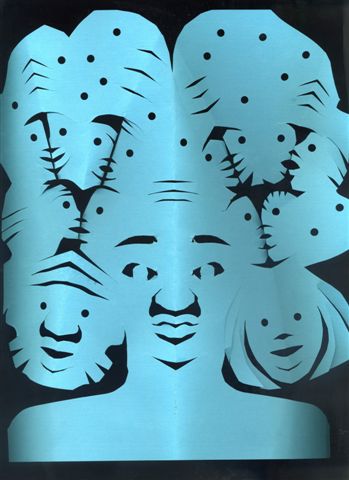
What best describes a family's ties and history, a tree-like structure, or a huge living organism? How about a huge grape vine loaded with bunches of grapes, each representing a nuclear family? Does a "Family Organism" reach beyond space and time? Image (c) Amir Bey, 2010 Paper
|
Instead of "Family Tree", I prefer "Family Fro", because of the amorphous nature of family ties and structures. If a living organism more aptly describes families, it would be the huge organism that is the biggest known living thing on Earth: a fungus in the Malheur National Forest of Oregon. The enormous plant, a specimen of Armillaria ostoyae, or honey mushroom, grows around the roots of trees and is thought to have started from a single spore at least 2,400 years ago and now covers about 2,200 acres.
Should a family, its history and ties be considered an organism such as that?
|
|
|
| | | |